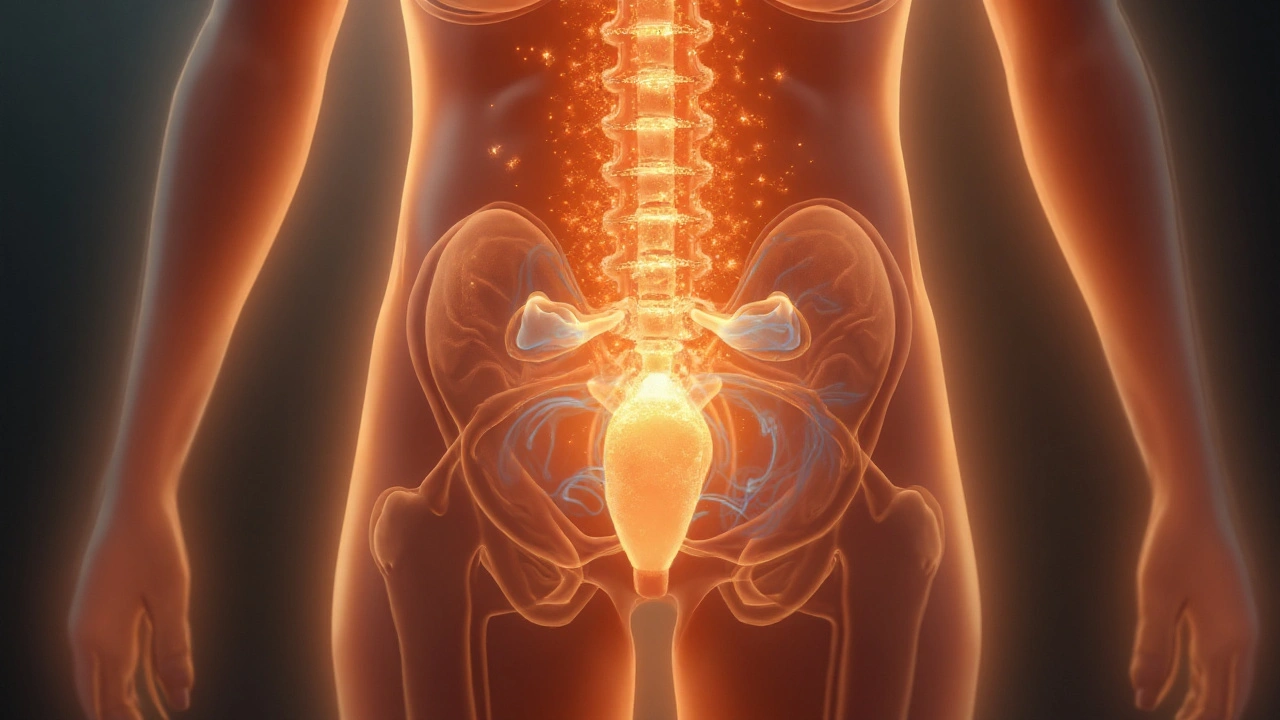
Understanding Bladder and Urinary Tract Muscle Spasms in Multiple Sclerosis
Explore why muscle spasms in the bladder and urinary tract happen in multiple sclerosis, how they’re diagnosed, and the most effective treatment options.
25 Sep 2025If you find yourself leaking urine when you laugh, cough, or run, you’re dealing with urinary incontinence. It’s a common problem that affects millions, but many people hide it because they think it’s embarrassing. The good news is that there are clear, practical ways to get a grip on the situation.
First, understand that incontinence isn’t a single disease. It’s a symptom that can show up for different reasons. Knowing why your bladder is letting go helps you pick the right fix.
Age is a big factor. As we get older, the muscles that support the bladder get weaker. Women are especially prone after pregnancy or menopause because hormonal changes affect pelvic muscles.
Other causes include a urinary tract infection, an enlarged prostate in men, or medications that relax the bladder too much. Even simple things like drinking too much caffeine or alcohol can irritate the bladder and trigger leaks.
Weight matters, too. Extra belly fat puts pressure on the bladder and pelvic floor, making leaks more likely. If you’ve had surgery near the bladder or pelvis, scar tissue can change how the bladder works.
Stress incontinence is the most common type. It happens when sudden pressure – like a sneeze – forces urine out. Urge incontinence, on the other hand, feels like a sudden, strong need to go that can’t be held back.
The first step is to track your bladder habits. Write down when you pee, how much you drink, and any leaks you notice. This helps you spot patterns and talk more clearly with a doctor.
Pelvic floor exercises, often called Kegels, are a simple yet powerful tool. Tighten the muscles you’d use to stop the flow of urine, hold for three seconds, then relax. Do three sets of ten reps each day. It may feel odd at first, but consistency makes a huge difference.Try timed voiding. Set a schedule to go to the bathroom every two to four hours, even if you don’t feel an urge. Over time, your bladder learns to hold more.
Limit bladder irritants. Cut back on coffee, tea, soda, and alcohol. These drinks can make the bladder overactive.
Stay hydrated, but spread your fluid intake throughout the day. Drinking a lot at once can overload the bladder and increase leaks.
Weight loss can relieve pressure on the pelvic floor. Even a modest 10‑pound drop often lessens the frequency of accidents.
If you’re diabetic, keep your blood sugar in range. High sugar can damage nerves that control the bladder.
Over‑the‑counter absorbent pads can help you stay comfortable while you work on underlying causes. Choose a product that’s thin enough to feel normal but strong enough to protect clothing.
When lifestyle changes aren’t enough, talk to a doctor about medications. Some drugs reduce bladder overactivity, while others help tighten the urethra.
Physical therapy is another option. A therapist can guide you through stronger pelvic floor workouts and teach you proper posture that supports bladder control.
In severe cases, doctors may suggest minimally invasive procedures or surgery. These aren’t first‑line options, but they can restore confidence when other methods fail.
Bottom line: urinary incontinence is manageable. Start with simple habits – tracking, Kegels, and smarter drinking – then move to professional help if needed. You deserve a life without the worry of leaks, and the steps above can get you there.

Explore why muscle spasms in the bladder and urinary tract happen in multiple sclerosis, how they’re diagnosed, and the most effective treatment options.
25 Sep 2025